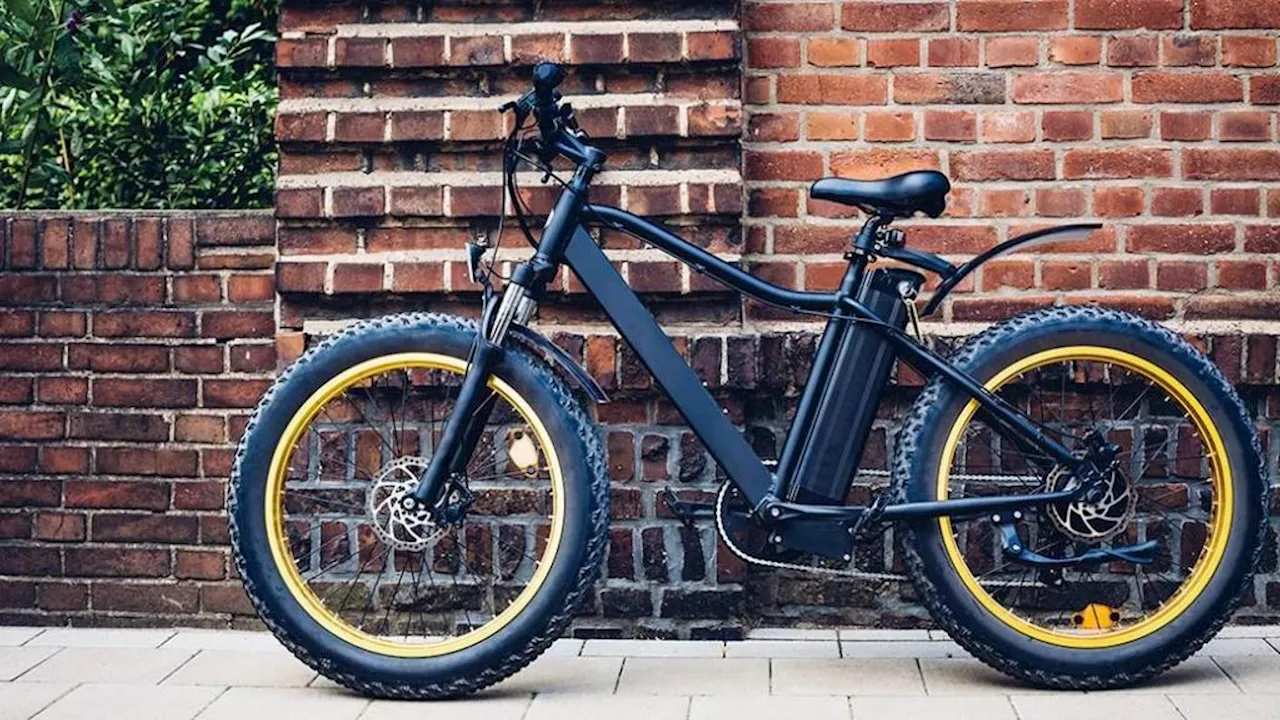This article explores the growing popularity of electric bikes, highlighting their advantages, different motor types, battery options, and features. It also provides insights into e-bike pricing, regulations, and recommendations for choosing the right model.
The popularity of electric bikes , or e-bikes, has surged in recent years. These bikes offer a unique blend of traditional cycling and electric assistance, allowing riders to choose between manual pedaling and relying on the integrated motor for support. E-bike commuting presents numerous advantages over driving a car, including cost savings, improved health outcomes, and a reduced environmental impact.
When selecting an e-bike, factors such as motor type, battery life, size, and portability should be carefully considered.E-bikes have evolved significantly, becoming more accessible and user-friendly. They provide an excellent option for individuals with limited lung capacity or those gradually transitioning to independent cycling. For instance, if a flat trail unexpectedly steepens, the motor can provide a valuable boost. Furthermore, opting for e-bike commuting instead of driving a car, even occasionally, can considerably lessen your annual carbon footprint. The average vehicle releases approximately 4.6 metric tons of carbon dioxide each year.There are three primary types of electric motors commonly found on e-bikes. Brushless motors, known for their lightweight design, power, and durability, are rapidly gaining popularity. Friction drive motors, while affordable and adaptable to non-electric bicycles, are prone to breakage and tire wear. The vast majority of e-bikes utilize lithium-ion batteries due to their efficiency and longevity. High-end models may employ advanced battery technologies like lithium-ion polymer or lithium manganese, offering enhanced performance but at a premium price. Many e-bikes feature assisted pedaling, requiring minimal pedaling effort while the motor intervenes on inclines or during fatigue. Most models allow users to customize the level of motor assistance.While e-bike technology continues to advance, minimizing weight, certain models can still be substantial due to the battery and electrical components. Transporting the bike, especially on stairs or into a vehicle, should be considered. Fortunately, some e-bikes are foldable for enhanced portability. Regenerative braking, a feature found in higher-end models, captures energy during braking and feeds it back into the battery, reducing the need for frequent recharging.The cost of e-bikes varies widely based on the chosen specifications. A reliable commuter e-bike with a brushless motor typically ranges from $800 to $1,800. Specialized models, including those designed for children, offer different price points and performance characteristics. It's important to note that specific regulations regarding the operation of e-bikes by children may vary by location. Operating an e-bike is generally not subject to licensing requirements in most parts of the United States, as long as it adheres to established guidelines. However, local regulations should always be verified before purchasing an e-bike
Transportation Electric Bikes E-Bikes Sustainable Transportation Commuting Motor Types Battery Life Features Cost Regulations
United States Latest News, United States Headlines
Similar News:You can also read news stories similar to this one that we have collected from other news sources.
 The Rise of Memes ($RISE) Launches: A Meme-Inspired Strategy Game on the BlockchainThe Rise of Memes ($RISE) is a new play-to-earn mobile game that combines real-time strategy gameplay with meme culture. Players can choose from five unique factions, lead meme-inspired heroes, and form alliances to dominate the map.
The Rise of Memes ($RISE) Launches: A Meme-Inspired Strategy Game on the BlockchainThe Rise of Memes ($RISE) is a new play-to-earn mobile game that combines real-time strategy gameplay with meme culture. Players can choose from five unique factions, lead meme-inspired heroes, and form alliances to dominate the map.
Read more »
 High-Rise Art: The Rise of Rope-Assisted GraffitiThis article delves into the burgeoning trend of rope-assisted graffiti in New York City, profiling two prominent practitioners, XSM and QZAR, and their daring nighttime escapades. It explores their motivations, techniques, and the growing community of artists who are pushing the boundaries of street art.
High-Rise Art: The Rise of Rope-Assisted GraffitiThis article delves into the burgeoning trend of rope-assisted graffiti in New York City, profiling two prominent practitioners, XSM and QZAR, and their daring nighttime escapades. It explores their motivations, techniques, and the growing community of artists who are pushing the boundaries of street art.
Read more »
 Citi Bike Fare Increases Take EffectCiti Bike, New York City's bike-sharing program, is implementing fare increases for both traditional and electric bikes. The hikes, attributed to inflation and e-bike-related costs, affect single-ride passes, per-minute rates, and overage fees. Non-electric bike rentals for non-members now cost $4.99, while e-bike fees rise to 38 cents per minute. The expansion of Citi Bike into new neighborhoods in the Bronx, Brooklyn, and Queens is also planned for next fall.
Citi Bike Fare Increases Take EffectCiti Bike, New York City's bike-sharing program, is implementing fare increases for both traditional and electric bikes. The hikes, attributed to inflation and e-bike-related costs, affect single-ride passes, per-minute rates, and overage fees. Non-electric bike rentals for non-members now cost $4.99, while e-bike fees rise to 38 cents per minute. The expansion of Citi Bike into new neighborhoods in the Bronx, Brooklyn, and Queens is also planned for next fall.
Read more »
 Tech Deals to Shop This Week: iPhone SE Refurbishes, Peloton Bikes, AirPods and MoreExplore the best tech deals of the week, including discounts on Apple iPhone SE refurbishments, Peloton Bikes, AirPods, TurboTax, and more. CES 2025 is approaching, but these deals are ready to grab right now.
Tech Deals to Shop This Week: iPhone SE Refurbishes, Peloton Bikes, AirPods and MoreExplore the best tech deals of the week, including discounts on Apple iPhone SE refurbishments, Peloton Bikes, AirPods, TurboTax, and more. CES 2025 is approaching, but these deals are ready to grab right now.
Read more »
 The Benefits and Types of Stationary BikesThis article explores the advantages of stationary bikes for fitness, including their impact on weight loss, muscle building, and joint health. It also delves into the three main types of stationary bikes: upright, recumbent, and spinning, highlighting their unique features and suitability for different users.
The Benefits and Types of Stationary BikesThis article explores the advantages of stationary bikes for fitness, including their impact on weight loss, muscle building, and joint health. It also delves into the three main types of stationary bikes: upright, recumbent, and spinning, highlighting their unique features and suitability for different users.
Read more »
 Stationary Bikes: A Guide to Choosing the Right OneThis article explores the benefits of stationary bikes for fitness and cycling enthusiasts, highlighting the different types (upright, recumbent, spinning) and factors to consider before purchasing one.
Stationary Bikes: A Guide to Choosing the Right OneThis article explores the benefits of stationary bikes for fitness and cycling enthusiasts, highlighting the different types (upright, recumbent, spinning) and factors to consider before purchasing one.
Read more »
